- Home
- Tom Clancy
SSN Page 16
SSN Read online
Page 16
* * *
It was nearing midnight. The captain had been relieved of his command duty officer responsibilities by the executive officer. The new section fire control tracking party had just settled in when the TB-23 thin line towed array gained tonal contact. These tonals were the same as those Cheyenne had recorded during her earlier encounter with the Chinese Alfa before he was lost in the shallow shoal water.
As towed-array bearing ambiguity was being resolved, more tonals were detected, on different beams, to the east. These tonals were also the same as the Chinese Alfa.
The executive officer knew that there was only one way to interpret the situation: clearly, there were two Alfas. As more data came in, he could tell that the easterly one was closer and was maintaining his distance, but the other Alfa was closing on Cheyenne’s position. The fact that neither the conformal nor the spherical arrays had contact as of yet meant that both were easily beyond 60,000 yards away.
The executive officer called the captain to the conn.
Mack, as he always did, made his decisions quickly. In battle, he simply didn’t have the luxury of mulling things over for long.
Cheyenne would close on the Alfa to the west. Mack chose that option because he knew the first Alfa might have recorded some of Cheyenne’s signature, and by closing on the other Alfa first he would place the easterly Alfa in Cheyenne’s baffles. This was, perhaps, not the best place for it to be, but it was the best option available to him. And it had the added benefit of allowing Cheyenne to take on the unsuspecting Alfa first.
Battle stations were manned as soon as contact was gained on the conformal array at 40,000 yards.
“Torpedo room, fire control, make tubes one and two ready in all respects, including opening the outer doors.” As was Mack’s habit, he instructed the executive officer to order the tubes readied before the range was so close that the Alfa would hear the evolution.
Acknowledgment, as always, was immediate. “Make tubes one and two ready in all respects, including opening the outer doors, fire control, torpedo room, aye.”
The executive officer, acting in his role as fire-control officer, passed the acknowledgment on to Mack. “Captain, tubes one and two are ready in all respects. Both outer doors are open.”
“Very well, fire control,” Mack answered.
The Alfa was drawing right now, with contact on all sonar arrays. When the BSY-1 operator and the fire-control coordinator were satisfied with the TMA solution on Master 69, the Chinese Alfa class attack submarine, the captain ordered, “Firing point procedures, Master 69.”
His command was acknowledged and the combat systems officer at the BSY-1 reported the target course, speed, and range.
“Sonar, conn, stand by.”
“Conn, sonar, standing by.”
“Match sonar bearings and shoot, tubes one and two.”
“Match sonar bearings and shoot, tubes one and two, aye.”
There was a short delay, and then the combat systems officer reported, “Tubes one and two fired electrically.”
“Conn, sonar, units from tubes one and two running hot, straight, and normal,” said the sonar supervisor as the two torpedoes executed their wire-clearance maneuvers. They were running at a slower speed for now. Once they had acquired they would increase speed and come up from their deep search depth. When they breached the layer, the torpedoes would pitch up and complete their acceleration to attack speed.
“Very well, sonar,” Mack replied. “Time to acquisition?” he asked the combat systems officer.
“Fifteen minutes, twenty seconds, Captain.”
Hunting two Alfas, with every passing moment increasing the odds that Cheyenne would be discovered, fifteen minutes had never seemed so long to Mack. After another eternity had passed, he heard, “Both units have acquired.”
“Conn, sonar, Master 69 is turning toward and increasing speed, cavitating heavily.”
Mack didn’t have a chance to acknowledge the information. Before he could say anything sonar reported noisemakers launched by the Alfa.
Mack nodded and ordered “steer the weapons.” That would keep them from being tricked into attacking the decoys. He also ordered Cheyenne’s course changed to the right by ninety degrees. He wanted accurate targeting information for the torpedoes, and for that he needed the bearings to the incoming Alfa and to the stationary noisemakers to diverge.
It didn’t take long to obtain a bearing spread. But Mack didn’t have any chance to relax. The combat systems officer had just reported the torpedoes on course for intercept of Master 69, when out of the baffles came sonar contact on the second Alfa.
“Cut the wires, shut the outer doors, and reload tubes one and two,” Mack ordered. “Make tubes three and four ready in all respects, including opening the outer doors.”
A melee situation was rapidly developing.
“Conn, sonar, we have torpedoes in the water, bearings 285, 290, 110, and 105. Both Alfas have launched weapons at us!”
“Match sonar bearings and shoot, Master 70, as soon as tubes three and four are ready.”
It was time for Cheyenne to clear datum. It was also time for their own countermeasures to be launched. As soon as Mack received the report of tubes three and four being fired electrically, he ordered the outer doors shut and the tubes reloaded. The torpedoes they’d just fired would have to do their own thing.
“Steady as she goes, all ahead flank. Do not cavitate. Make your depth one thousand feet.” When those orders had been acknowledged, Mack added, “Rig ship for depth charge.” It didn’t matter that those were torpedoes coming at Cheyenne, not depth charges. The phrase had originated in the early days of the Silent Service, and it had stuck.
Mack had done all he could for the moment. His plan now was to let the countermeasures do their own work and to try and slip away from the scene.
Cheyenne reached flank speed, on course 015, and at one thousand feet, as the Chinese-launched, Russian-made torpedoes were entering the baffles. The countermeasures, launched from the dispensers at the stern planes’ vertical struts, had worked, decoying the fish and buying time for Cheyenne.
That was the good news. The bad news was that sonar couldn’t hear Cheyenne’s last two torpedoes, and couldn’t tell whether they had entered their terminal homing mode at Master 70. With the guidance wires cut, the BSY-1 had no knowledge of it, either.
The next few minutes were tense and silent. Then the sonar supervisor spoke up. “Conn, sonar, two explosions, one bearing 175 and the other coming from the baffles.”
Sonar didn’t have enough bearing information to get both direct path and bottom bounce, so the sonar supervisor couldn’t report range. Sonar also couldn’t tell exactly what the torpedoes had impacted against. It could have been one or both of the Chinese Alfas, but it could also have been Chinese noisemakers, or even Cheyenne’s own countermeasures. To top it off, Cheyenne had lost contact on both Alfas in the baffles.
In short, Mack had no idea whether one or both of the Alfas were still there — and he wanted to know. That information was important to Cheyenne’s survival, and to the success of her mission.
On his orders, Cheyenne slowed and, after proceeding above the layer, cleared her baffles to port. There was no sign of the Alfas, only reverberations from the explosions.
The data did show, however, that there had been three explosions, not two. The one they’d picked up in their baffles had actually been two separate explosions.
Mack didn’t have many different ways to read this situation. The Alfas could either have surfaced or have gone to the bottom — and he didn’t think they’d gone down. There had been eight separate torpedoes in the area, he knew, four from Cheyenne and two each from the Alfas. With only three explosions, it was doubtful that both Chinese submarines had been killed.
But there just wasn’t any way to tell from the available data. Not yet, anyway. The sonar tapes would have to be analyzed, a process that would take some time, and then maybe they�
��d have a better idea.
* * *
Cheyenne continued on course toward the second patrol area, at seven hundred feet to keep beneath the layer, while battle stations and the rig for depth charge were secured. The usual all-officer meeting was delayed for at least thirty minutes while the captain and executive officer talked in his stateroom and the melee was reconstructed by the battle stations fire-control party.
It was clear to both the captain and the executive officer that the Chinese commander-in-chief had ordered drastic measures. Both Alfas had continued on course right at Cheyenne’s datum without trying to turn away, even with Mk 48s coming their way.
Mack had always hated the Soviet Crazy Ivan maneuvers, but this was even worse. It was more like the Japanese kamikaze, the “Divine Wind” World War II pilots.
When the officers finally got together in the wardroom, the sonar supervisor and his chief petty officer were there with their tape analysis. They had been able to determine that two of the explosions were Mk 48 ADCAP PBXN-103, one in the baffles and the one bearing 175. The third explosion, originally in the baffles, was from a 53cm torpedo warhead. They were able to determine the difference in kilogram yield based on the duration and decibels of the reverberations.
Their reconstruction of the target courses and torpedo courses proved almost conclusively that the two Alfas had suffered one hit apiece. As for the remaining Chinese torpedoes, in their professional opinion either the 53cm torpedo explosion had destroyed them or they had run themselves to exhaustion while circling Cheyenne’s countermeasures. The torpedoes, once decoyed, would have waited for the countermeasures to exhibit some doppler — something they had been programmed not to do.
In keeping with his policies, Captain Mackey used the 1MC to inform the entire crew of the reconstructed results of their battle. This time, he told them, the Chinese commander-in-chief’s orders had helped Cheyenne. The Alfas had been more intent on the kill than on their own survival. But next time… well, he didn’t want there to be a next time.
From now on, he told them, Cheyenne would launch her torpedoes at longer ranges, shooting on towed-array bearing solutions whenever possible. In fact, he added, he was contemplating shooting with the section fire-control tracking parties if need be. Mack had no desire to be rammed by the crazy Chinese COs on a vendetta and who apparently had no respect for their own men’s lives. With what he knew of the Chinese, he could only assume that they figured posthumous glory was better than returning to a firing squad.
The crew was silent after the captain finished talking on the 1MC. Each and every man on board Cheyenne realized that this could be a long war unless they put more rounds into the Chinese, both above and beneath the surface of the sea, and they couldn’t help wondering when Columbia and Bremerton would be sent to help. Being kept informed was the name of the game on board Cheyenne, and the executive officer had passed on the sister ship information at quarters prior to getting under way.
* * *
Cheyenne’s second patrol area was located two hundred nautical miles south-southeast of Macclesfield Bank, a spot that shoaled rapidly from over two thousand fathoms to depths of less than forty feet. The transit there was fast and silent and uneventful.
On arrival near the southwest corner of the area, the captain ordered the OOD to launch an SSXBT. This submarine bathythermograph device was designed to rise to the surface and then drop to the bottom, collecting data on temperature versus depth information through the water column. The SSXBT would send this data back over a thin wire, similar to the torpedo guidance wire, to an onboard recorder in the control room. The information from the SSXBT would be input to the BSY-1 for use by the sonar and fire-control systems. It also would provide layer depth information so that Cheyenne could effectively hide beneath the layer, or even a second, deeper layer.
Mack had not had time upon arrival in the first patrol area to obtain the SSXBT information. Cheyenne had encountered the two Alfas too quickly. But that wouldn’t be the case this time. He was planning the long-range shots now, and the information collected by the SSXBT would be vital to their accuracy. Cheyenne would get more SSXBT information at other locations, just in case horizontal gradients were present that could significantly affect the fire-control solution.
* * *
Three of the four planned SSXBT “shots” had been completed when the OOD informed the captain that sonar had gained weak, but slowly closing, Alfa-like tonal contacts to the north, possibly three separate contacts.
Mack acknowledged the information, but he didn’t like what it meant. These contacts couldn’t have been the Alfas from the south, so Russia really was dumping nuclear attack submarines on China.
Minutes later, while he was talking with the executive officer outside the exec’s stateroom, the OOD told Mack over the exec’s sound-powered phone that he had incoming flash VLF traffic over the floating wire. Mack and the executive officer proceeded to the radio room forward of the control room.
Bad timing, Mack thought as he read the message. As if the inbound Alfas weren’t enough, Cheyenne had just received orders to prepare to launch their Tomahawks. To do that, they would have to proceed to periscope depth to copy the IPAC Tomahawk targeting data over SSIXS.
Mack didn’t like it. Ideally, they would do that quickly, get to periscope depth, copy lengthy SSIXS traffic, and get back down before they lost the long-range shot advantage against the Alfas. Unfortunately, this situation was far from ideal. Launch directives were also coming in over the floating wire, and those launch directives wouldn’t allow him that luxury. Cheyenne was to remain at periscope depth and launch all twelve missiles as soon as the download was complete and pre-Palawan Island waypoints had been inserted into the CCS Mk 2 console.
Mack didn’t like it, but his orders didn’t give him any choice. Wasting no time, he ordered the OOD to take Cheyenne up to periscope depth.
As soon as Cheyenne started copying the targeting data, the captain ordered, “Man battle stations, missile,” then explained the situation to the crew. Cheyenne was to launch the TLAM-Cs to take out aircraft on the ground before they moved from their current revetments. She was also to launch the TLAM-Ds to crater the new runways so additional fighter aircraft, the SU-27 Flankers, could not be so quickly repositioned from the Paracels.
This was a one-shot opportunity. The Chinese would be asleep when the missiles reached their targets — they didn’t like to fly at night any more than the ex-Soviet pilots did. And the attack had to take place tonight because the Fleet Numerical Weather Center was projecting rainsqualls for the next two days, starting before daybreak.
The captain also prepared the crew for possible attack by the incoming Alfas. The noise of the VLS launches would not go undetected by them. And in addition, if there were surface ships and aircraft with the submarines, the booster rockets’ last-minute illumination of the darkness would provide them with Cheyenne’s location, the proverbial “flaming datum” with Cheyenne at the wrong end of the weapon’s track.
It was a dangerous mission, no doubt about it. And, if they were unlucky, it would be more than merely dangerous. It could be deadly.
The combat systems officer at the CCS Mk 2 reported that he had completed powering up each missile, downloaded the mission plans and flight profile, and verified proper weapon receipt of the data. He had then powered down the missiles until the captain was ready to start the automatic launch sequence. All plans and Cheyenne’s launch location fit the mission parameters, especially the range of flight to the airfields and the initial waypoint prior to Palawan Island TERCOM and DSMAC updates. Flight time would be just in excess of two hours.
“Firing point procedures, TLAM-C and TLAM-D, VLS tubes five through sixteen,” ordered the captain. The open mike heads-up to sonar and the short delay as the combat systems officer reapplied power to the missiles, inserted the launch key, and pressed the firing button, gave the sonar operators time to prepare their ears for the six to seven minutes of no
ise that would follow.
Mack wasn’t worried about that, though. He was worried that the noise would start those three Alfas cavitating toward Cheyenne. Sonar wouldn’t be able to hear that cavitation, but then it wouldn’t have to. Mack knew they’d be coming, and they’d be coming fast.
The hatch of VLS tube five opened hydraulically, freeing the interlock to detonate an explosive charge. The first TLAM-C burst upward through the thin plastic membrane of the loading canister that had helped to keep the missile dry until now.
The TLAM-C covered the short trip to the surface, less than thirty feet away, quickly. Just before the missile broached the surface, its booster rocket fired, drying quickly as it cleared the water.
The booster rocket used up the last of its fuel and the missile pitched down closer to the horizontal. Dropping its spent booster, the TLAM-C started its non-illuminating turbojet engine, accelerating to over five hundred knots as it turned toward the first waypoint.
On board Cheyenne, tube five backfilled with water to compensate for the loss of the ejected missile’s weight and then the hatch shut automatically. That freed the interlock for VLS tube six.
One down, and only eleven more to go, Mack thought. For once he was grateful for the relative slowness of submarines. Even the Alfa’s 40 knots were nothing compared to the Tomahawks.
The launch sequence seemed to take forever, but the Alfas were able to close the noisy datum by only four nautical miles. By the time the Chinese submarines had closed an additional two miles, Cheyenne had already secured periscope depth operations and had proceeded deep beneath the second layer. There she slowed, tracking the three noisy Alfas, still at battle stations and readying all four torpedo tubes, including opening the outer doors on tubes one and two.
The Chinese submarines had run too fast for too long. When they finally slowed to listen, the sounds of the Tomahawk launches had ceased.

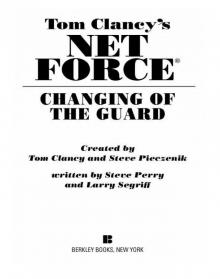 Changing of the Guard
Changing of the Guard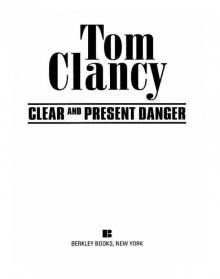 Clear and Present Danger
Clear and Present Danger Hounds of Rome
Hounds of Rome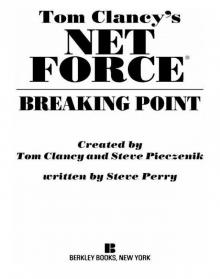 Breaking Point
Breaking Point Tom Clancy's Jack Ryan Books 7-12
Tom Clancy's Jack Ryan Books 7-12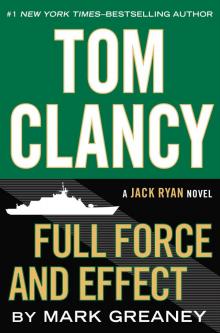 Full Force and Effect
Full Force and Effect The Archimedes Effect
The Archimedes Effect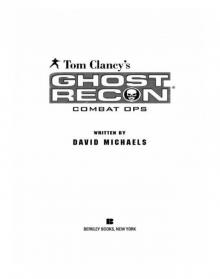 Combat Ops
Combat Ops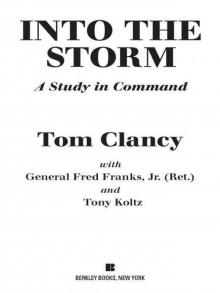 Into the Storm: On the Ground in Iraq
Into the Storm: On the Ground in Iraq Under Fire
Under Fire Point of Impact
Point of Impact Red Rabbit
Red Rabbit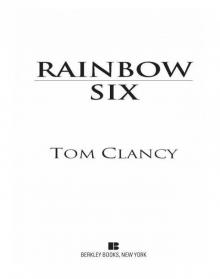 Rainbow Six
Rainbow Six The Hunt for Red October
The Hunt for Red October The Teeth of the Tiger
The Teeth of the Tiger Conviction (2009)
Conviction (2009)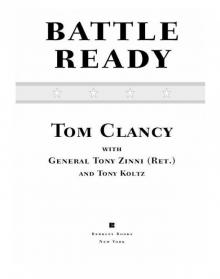 Battle Ready
Battle Ready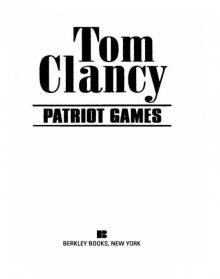 Patriot Games
Patriot Games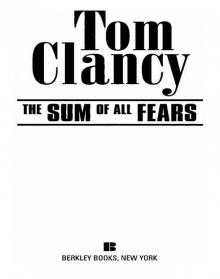 The Sum of All Fears
The Sum of All Fears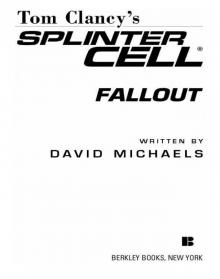 Fallout (2007)
Fallout (2007) Red Storm Rising
Red Storm Rising The Cardinal of the Kremlin
The Cardinal of the Kremlin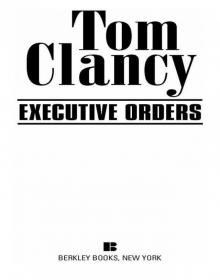 Executive Orders
Executive Orders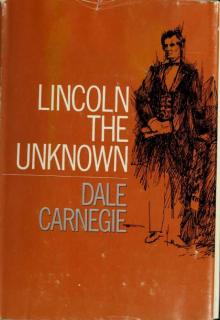 Lincoln, the unknown
Lincoln, the unknown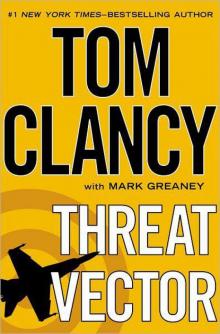 Threat Vector
Threat Vector The Hunted
The Hunted Shadow Warriors: Inside the Special Forces
Shadow Warriors: Inside the Special Forces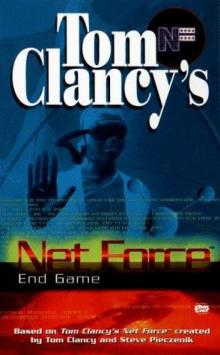 End Game
End Game Special Forces: A Guided Tour of U.S. Army Special Forces
Special Forces: A Guided Tour of U.S. Army Special Forces Locked On
Locked On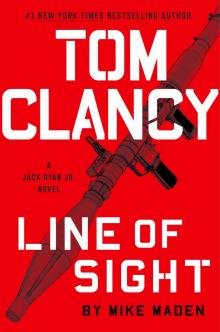 Line of Sight
Line of Sight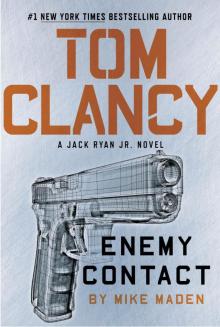 Tom Clancy Enemy Contact - Mike Maden
Tom Clancy Enemy Contact - Mike Maden Fighter Wing: A Guided Tour of an Air Force Combat Wing
Fighter Wing: A Guided Tour of an Air Force Combat Wing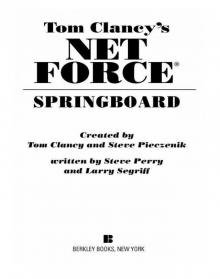 Springboard
Springboard Line of Sight - Mike Maden
Line of Sight - Mike Maden EndWar
EndWar Dead or Alive
Dead or Alive Tom Clancy Support and Defend
Tom Clancy Support and Defend Checkmate
Checkmate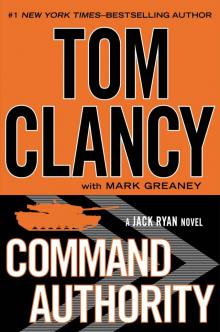 Command Authority
Command Authority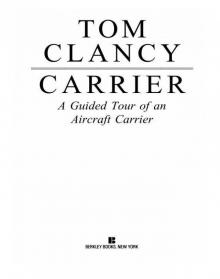 Carrier: A Guided Tour of an Aircraft Carrier
Carrier: A Guided Tour of an Aircraft Carrier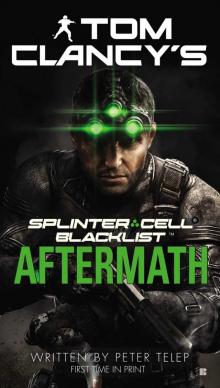 Blacklist Aftermath
Blacklist Aftermath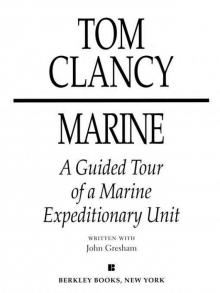 Marine: A Guided Tour of a Marine Expeditionary Unit
Marine: A Guided Tour of a Marine Expeditionary Unit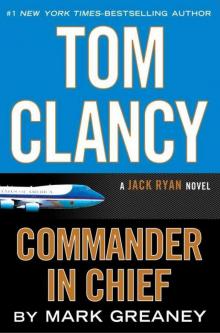 Commander-In-Chief
Commander-In-Chief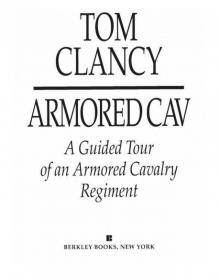 Armored Cav: A Guided Tour of an Armored Cavalry Regiment
Armored Cav: A Guided Tour of an Armored Cavalry Regiment Tom Clancy's Jack Ryan Books 1-6
Tom Clancy's Jack Ryan Books 1-6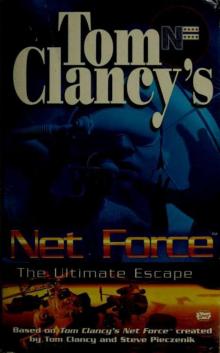 The Ultimate Escape
The Ultimate Escape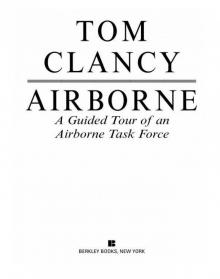 Airborne: A Guided Tour of an Airborne Task Force
Airborne: A Guided Tour of an Airborne Task Force Debt of Honor
Debt of Honor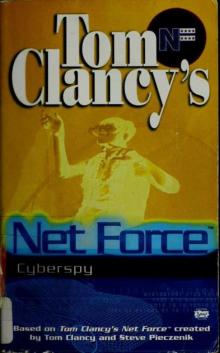 Cyberspy
Cyberspy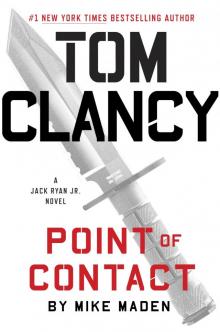 Point of Contact
Point of Contact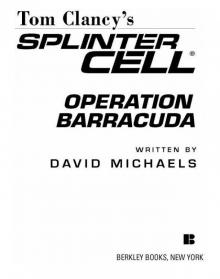 Operation Barracuda (2005)
Operation Barracuda (2005)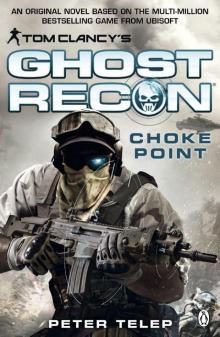 Choke Point
Choke Point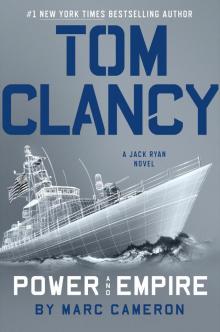 Power and Empire
Power and Empire Every Man a Tiger: The Gulf War Air Campaign
Every Man a Tiger: The Gulf War Air Campaign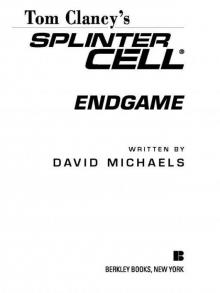 Endgame (1998)
Endgame (1998) EndWar: The Missing
EndWar: The Missing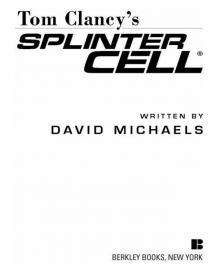 Splinter Cell (2004)
Splinter Cell (2004)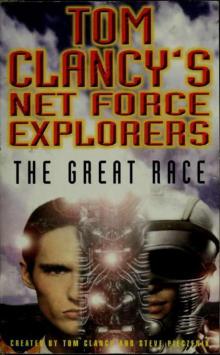 The Great Race
The Great Race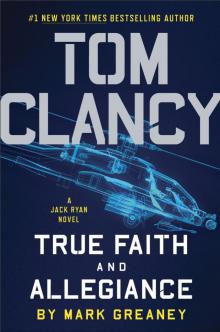 True Faith and Allegiance
True Faith and Allegiance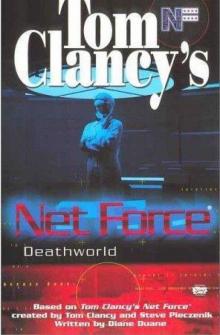 Deathworld
Deathworld Ghost Recon (2008)
Ghost Recon (2008)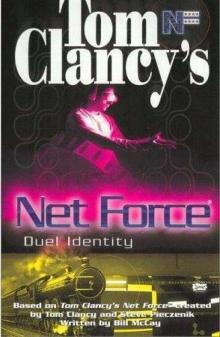 Duel Identity
Duel Identity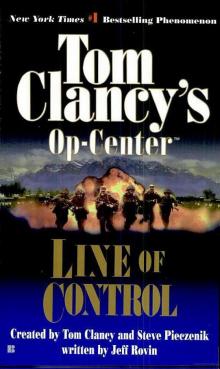 Line of Control o-8
Line of Control o-8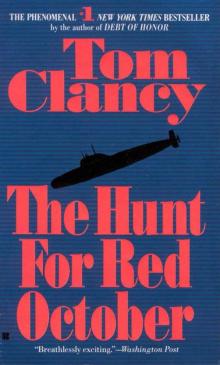 The Hunt for Red October jr-3
The Hunt for Red October jr-3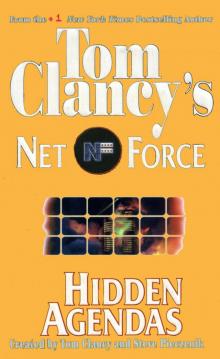 Hidden Agendas nf-2
Hidden Agendas nf-2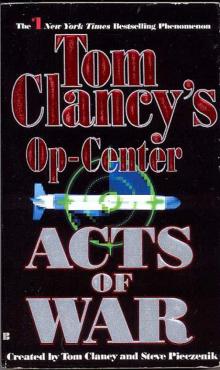 Acts of War oc-4
Acts of War oc-4 Ruthless.Com pp-2
Ruthless.Com pp-2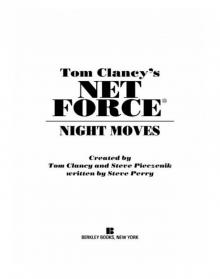 Night Moves
Night Moves The Hounds of Rome - Mystery of a Fugitive Priest
The Hounds of Rome - Mystery of a Fugitive Priest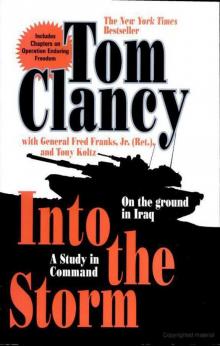 Into the Storm: On the Ground in Iraq sic-1
Into the Storm: On the Ground in Iraq sic-1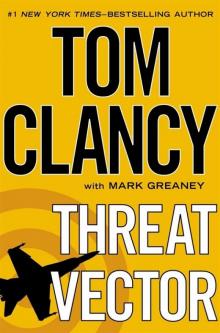 Threat Vector jrj-4
Threat Vector jrj-4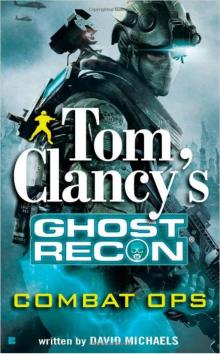 Combat Ops gr-2
Combat Ops gr-2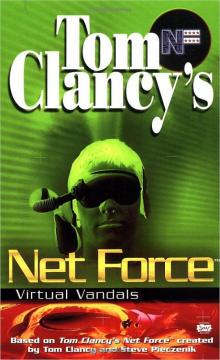 Virtual Vandals nfe-1
Virtual Vandals nfe-1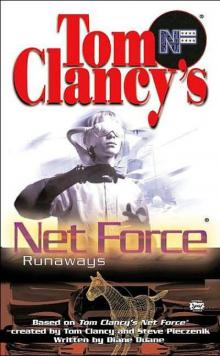 Runaways nfe-16
Runaways nfe-16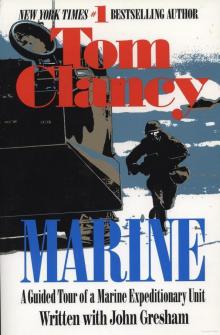 Marine: A Guided Tour of a Marine Expeditionary Unit tcml-4
Marine: A Guided Tour of a Marine Expeditionary Unit tcml-4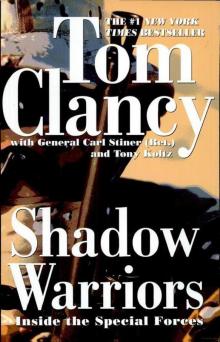 Shadow Warriors: Inside the Special Forces sic-3
Shadow Warriors: Inside the Special Forces sic-3 Jack Ryan Books 1-6
Jack Ryan Books 1-6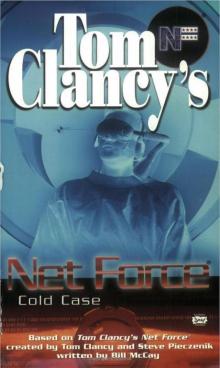 Cold Case nfe-15
Cold Case nfe-15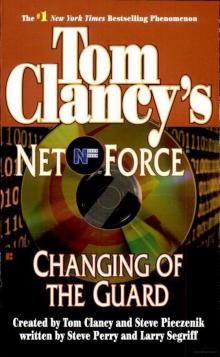 Changing of the Guard nf-8
Changing of the Guard nf-8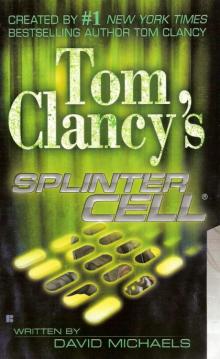 Splinter Cell sc-1
Splinter Cell sc-1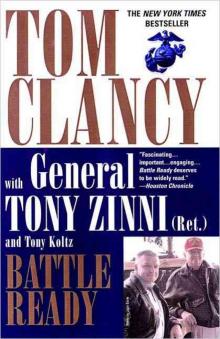 Battle Ready sic-4
Battle Ready sic-4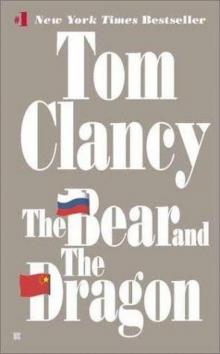 The Bear and the Dragon jrao-11
The Bear and the Dragon jrao-11 Fighter Wing: A Guided Tour of an Air Force Combat Wing tcml-3
Fighter Wing: A Guided Tour of an Air Force Combat Wing tcml-3 Patriot Games jr-1
Patriot Games jr-1 Jack Ryan Books 7-12
Jack Ryan Books 7-12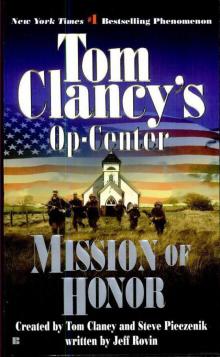 Mission of Honor o-9
Mission of Honor o-9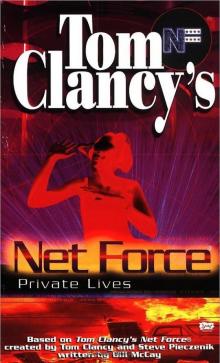 Private Lives nfe-9
Private Lives nfe-9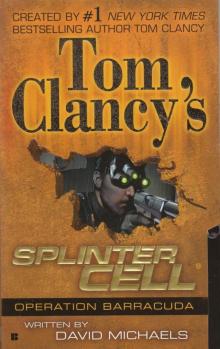 Operation Barracuda sc-2
Operation Barracuda sc-2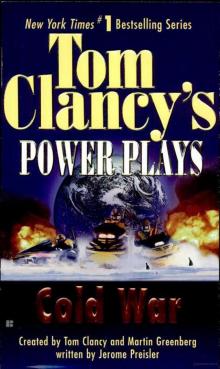 Cold War pp-5
Cold War pp-5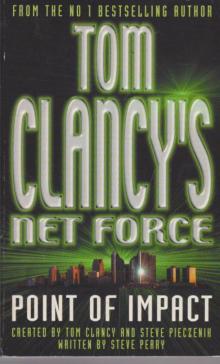 Point of Impact nf-5
Point of Impact nf-5 Red Rabbit jr-9
Red Rabbit jr-9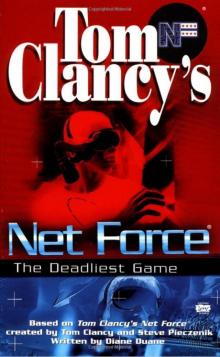 The Deadliest Game nfe-2
The Deadliest Game nfe-2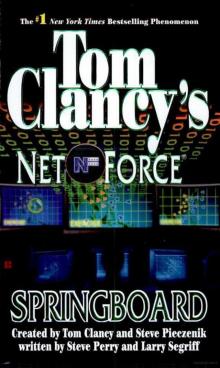 Springboard nf-9
Springboard nf-9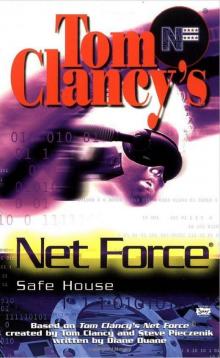 Safe House nfe-10
Safe House nfe-10 EndWar e-1
EndWar e-1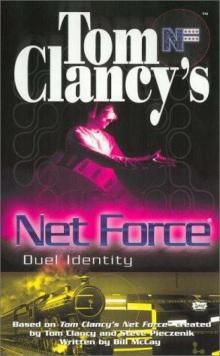 Duel Identity nfe-12
Duel Identity nfe-12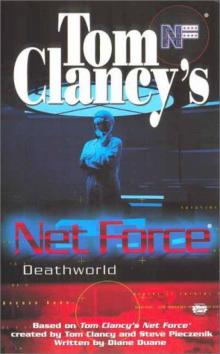 Deathworld nfe-13
Deathworld nfe-13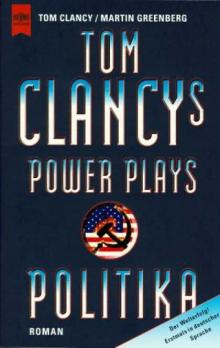 Politika pp-1
Politika pp-1 Rainbow Six jr-9
Rainbow Six jr-9 Tom Clancy's Power Plays 1 - 4
Tom Clancy's Power Plays 1 - 4 Endgame sc-6
Endgame sc-6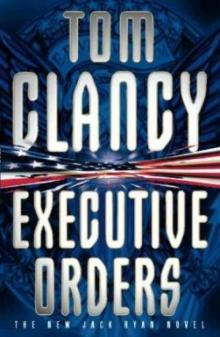 Executive Orders jr-7
Executive Orders jr-7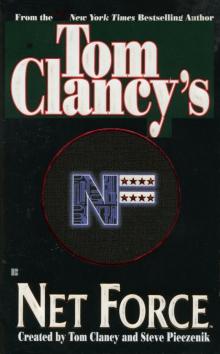 Net Force nf-1
Net Force nf-1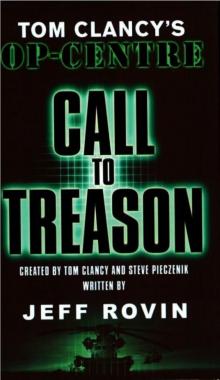 Call to Treason o-11
Call to Treason o-11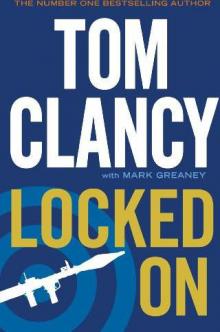 Locked On jrj-3
Locked On jrj-3 Against All Enemies
Against All Enemies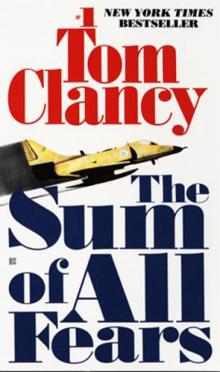 The Sum of All Fears jr-7
The Sum of All Fears jr-7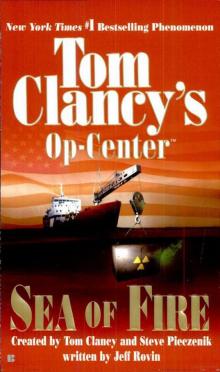 Sea of Fire o-10
Sea of Fire o-10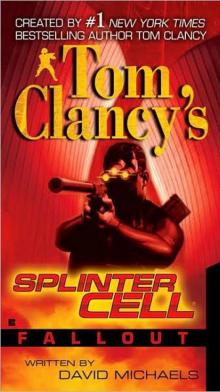 Fallout sc-4
Fallout sc-4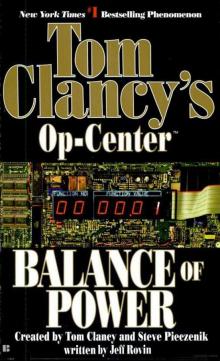 Balance of Power o-5
Balance of Power o-5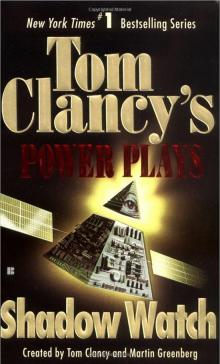 Shadow Watch pp-3
Shadow Watch pp-3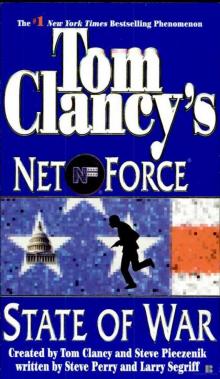 State of War nf-7
State of War nf-7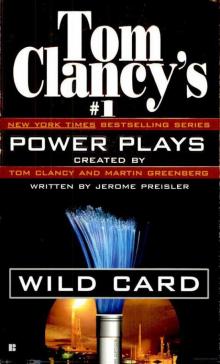 Wild Card pp-8
Wild Card pp-8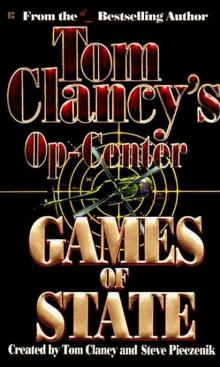 Games of State o-3
Games of State o-3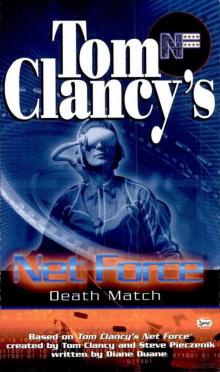 Death Match nfe-18
Death Match nfe-18 Against All Enemies mm-1
Against All Enemies mm-1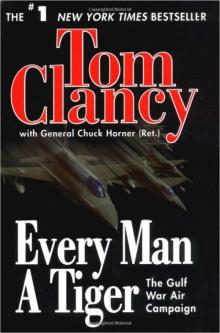 Every Man a Tiger: The Gulf War Air Campaign sic-2
Every Man a Tiger: The Gulf War Air Campaign sic-2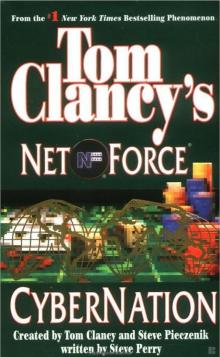 Cybernation nf-6
Cybernation nf-6 Support and Defend
Support and Defend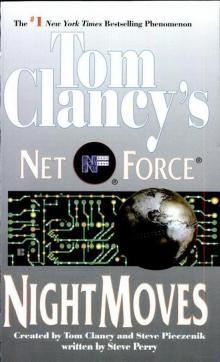 Night Moves nf-3
Night Moves nf-3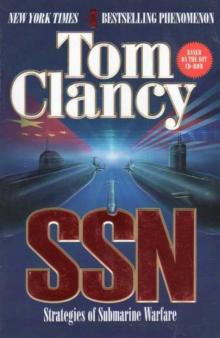 SSN
SSN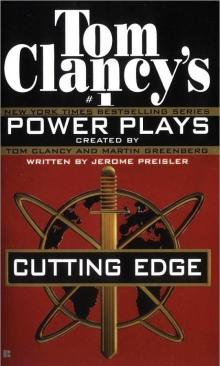 Cutting Edge pp-6
Cutting Edge pp-6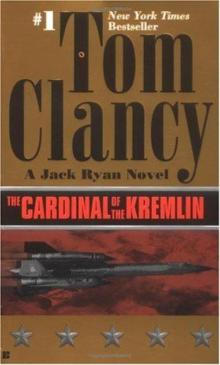 The Cardinal of the Kremlin jrao-5
The Cardinal of the Kremlin jrao-5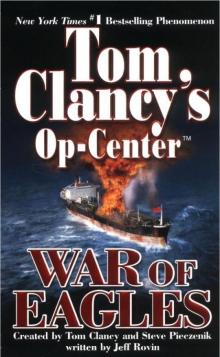 War of Eagles o-12
War of Eagles o-12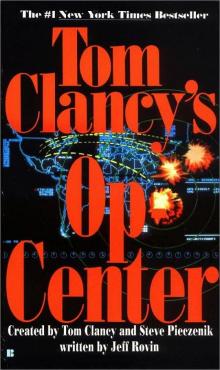 Op-Center o-1
Op-Center o-1 Mirror Image o-2
Mirror Image o-2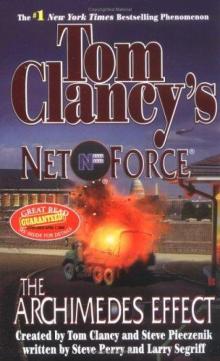 The Archimedes Effect nf-10
The Archimedes Effect nf-10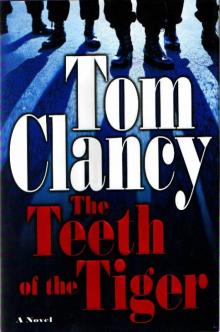 Teeth of the Tiger jrj-1
Teeth of the Tiger jrj-1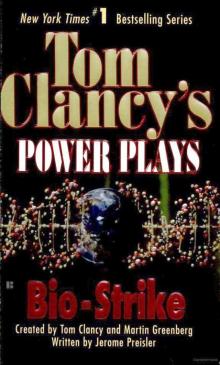 Bio-Strike pp-4
Bio-Strike pp-4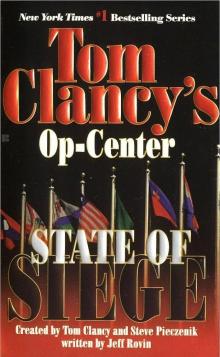 State of Siege o-6
State of Siege o-6 Debt of Honor jr-6
Debt of Honor jr-6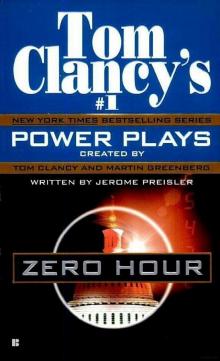 Zero Hour pp-7
Zero Hour pp-7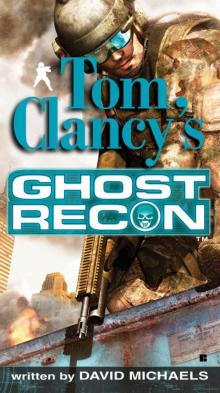 Ghost Recon gr-1
Ghost Recon gr-1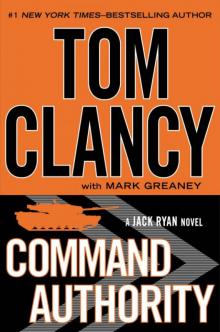 Command Authority jr-10
Command Authority jr-10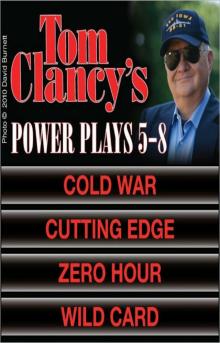 Tom Clancy's Power Plays 5 - 8
Tom Clancy's Power Plays 5 - 8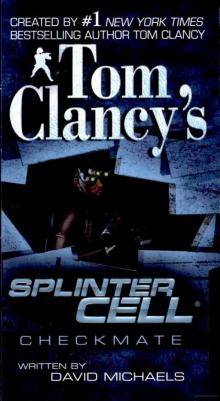 Checkmate sc-3
Checkmate sc-3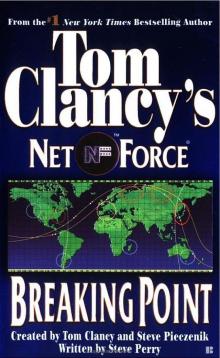 Breaking Point nf-4
Breaking Point nf-4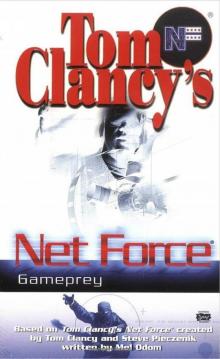 Gameprey nfe-11
Gameprey nfe-11 The Hunted e-2
The Hunted e-2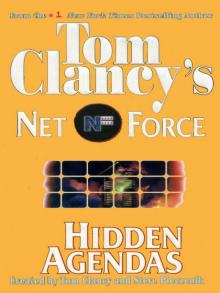 Hidden Agendas
Hidden Agendas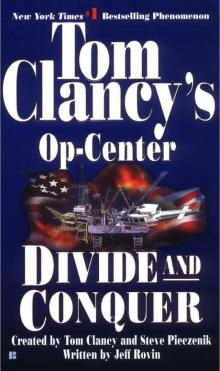 Divide and Conquer o-7
Divide and Conquer o-7